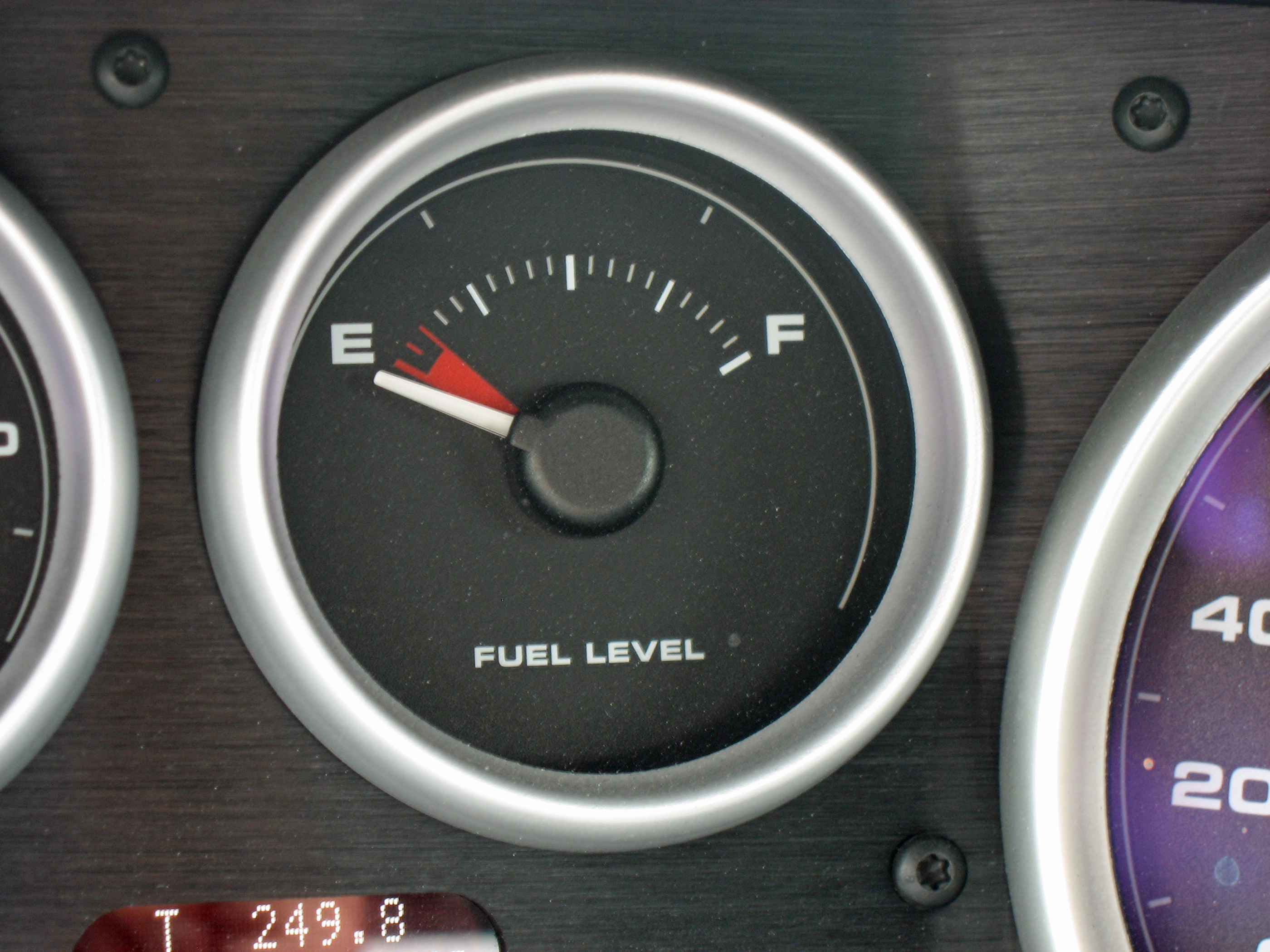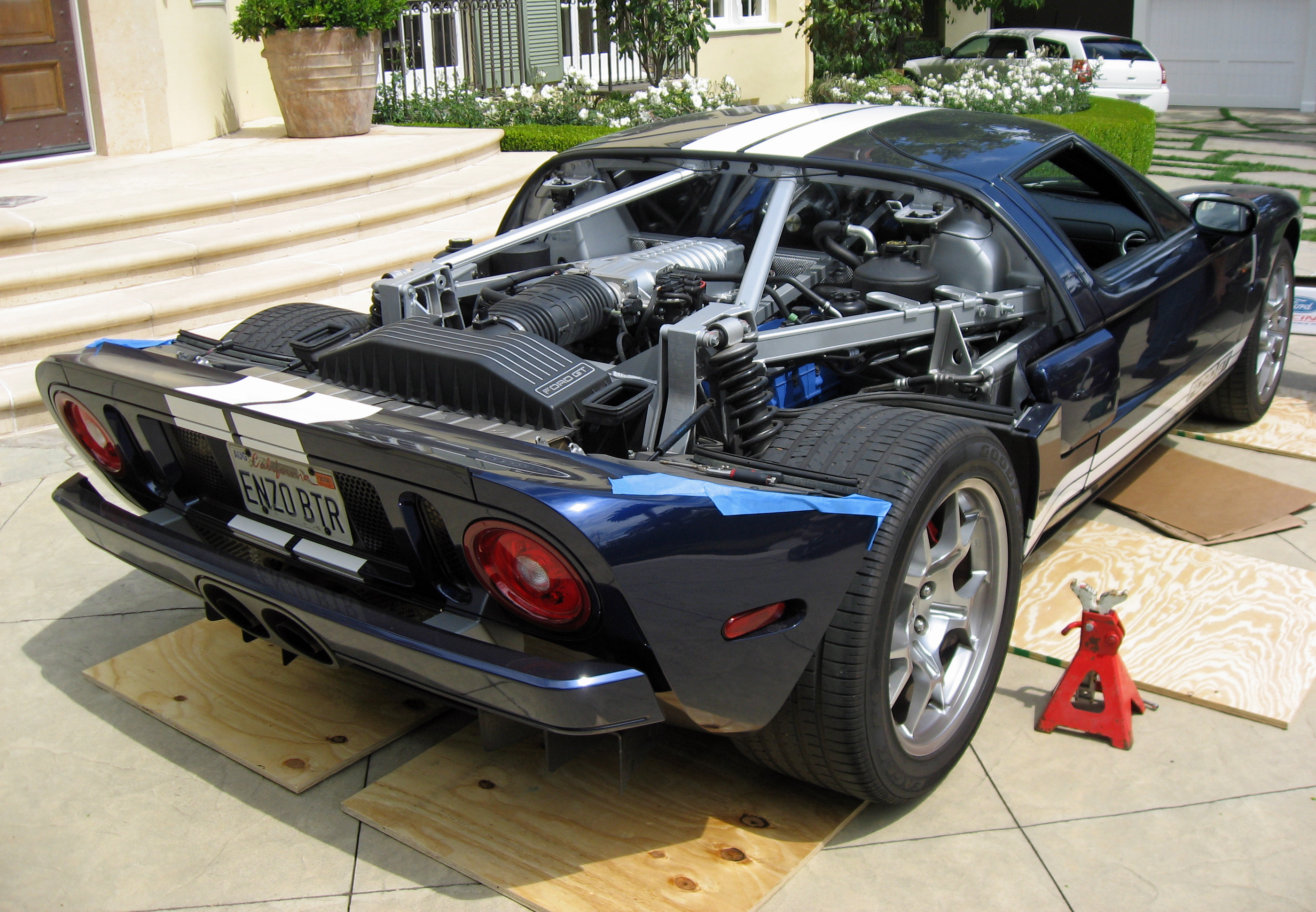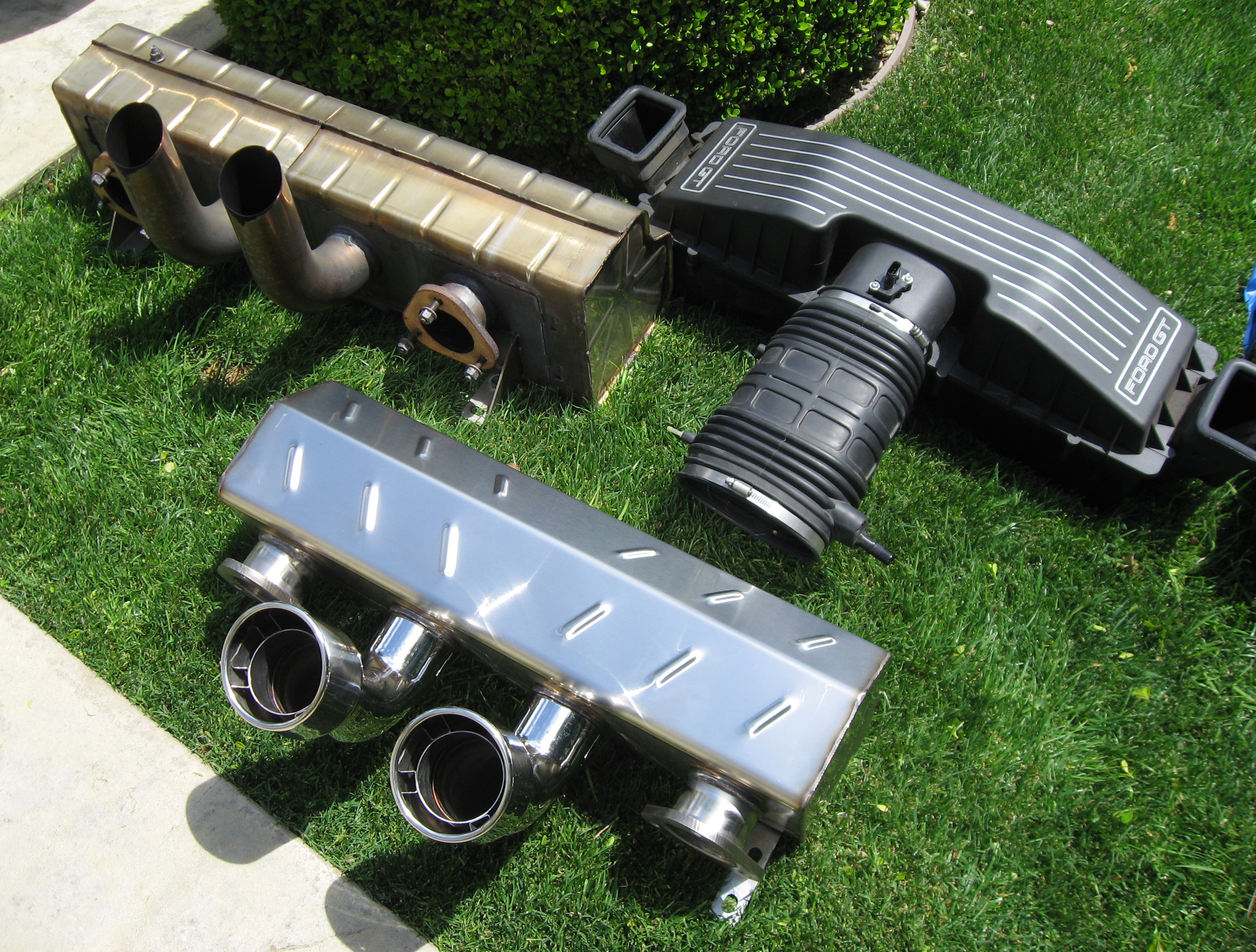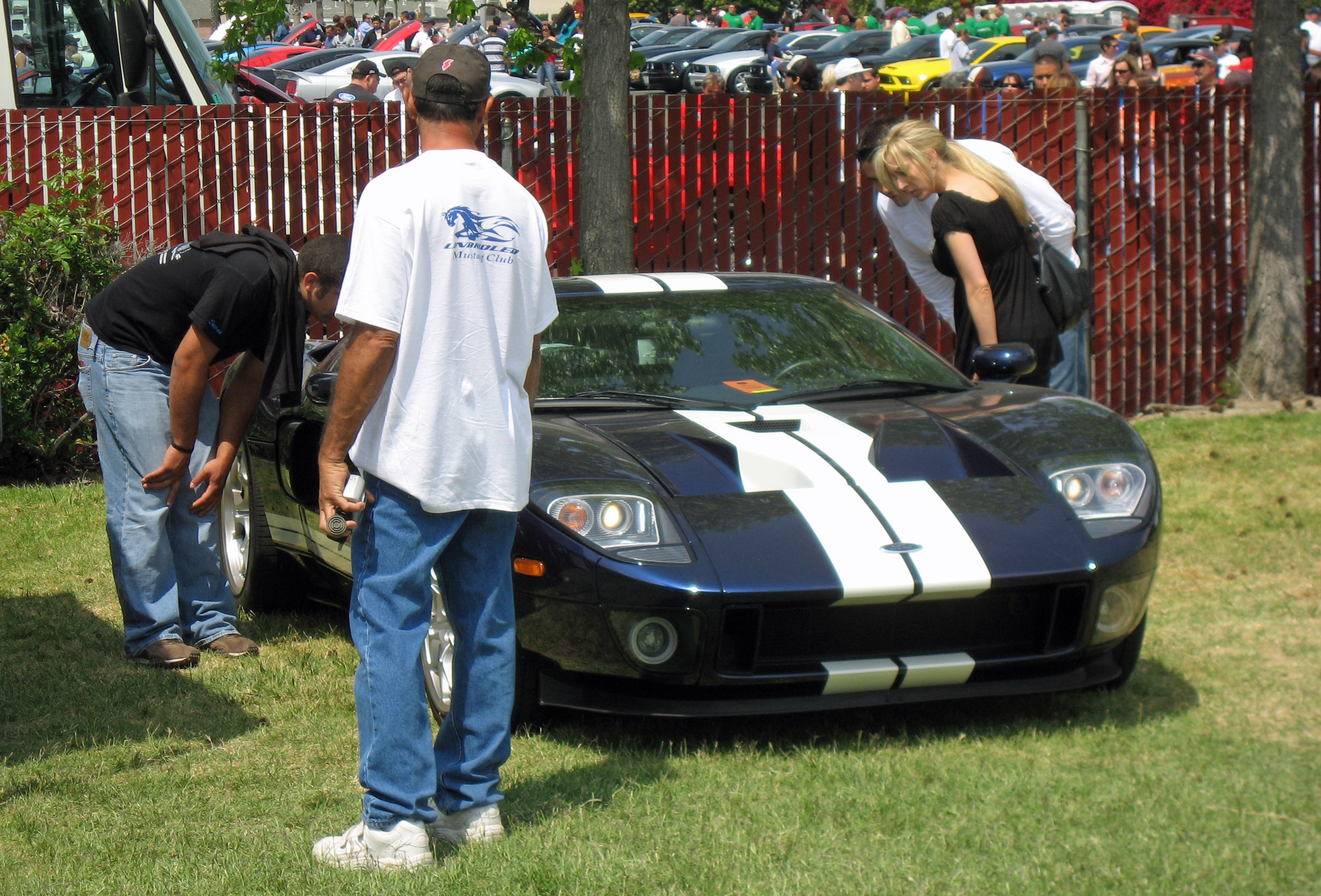In April of 2008 I tested just how optimistic the Ford GT’s fuel gauge is. Turns out it’s pretty optimistic, as it was well below “E” when I finally got to a station and I still only put 15.1 gallons into its 17.5 gallon tank. I also had the factory exhaust system swapped out for the Ford Racing/Borla system by the GT Guys. Then I took it to the Fabulous Fords car show.
April 2008: Ford GT Running Below Empty
By Karl Brauer, April 7, 2008 at 12,454
I’m the worst when it comes to driving with low-fuel lights on. My wife hates it. Ironically, she’s gotten pretty bad (good?) at it herself (I’ve trained her well).
Regardless, if I’m in a car and it’s not actually on the “E” I tend to keep driving. Most modern cars have very conservative fuel gauges, allowing their drivers to carry out blatant irresponsibility when it comes to planning fuel stops. My Ford GT is no different. The “red” zone starts at 1/8th of the fuel gauge, and the “Check Gauges” light comes on around 1/16th. But only wimps chicken out at that point.
On my way home in the GT on Friday I was passing the last gas station on PCH for about 25 miles when the warning light came on. “Hmmm,” I thought, “if I’ve only got 1 gallon left and I average 16.5 mpg, I’m not going to make it.” “But,” I told myself, “most cars have 1 gallon left when the gauge actually hits ‘E’ — so I’m good.” And on I drove.
This is the point most of us (myself included) begin watching the fuel gauge more closely than we watch the road, like that will somehow slow its descent. I once heard the best way to fix either a warning light or a low fuel gauge is to place a piece of black, electrical tape over it. Problem solved.
Sure enough, I pulled into the gas station with the gauge clearly below “E” (I took this photo after parking at the gas station, but with the engine still running) and 249.8 miles on the trip meter, which is about maximum distance a tank of fuel will take you in a Ford GT. If you do all highway driving and baby the engine (80 mph is about 2,000 rpm) you could probably squeeze 300 miles out of tank, but I’ve never done it.
It took 15.1 gallons to top off the Ford, but I’ve got entries in the logbook for 15.5 gallons and the tank is supposed to hold 17.5.
Pshaw — I still had plenty of gas (at least that’s what I always tell the wife).
2005 Ford GT: More Mods and a Fabulous Ford Event
April 21, 2008 at 12,900 miles
Sometimes you just can’t leave well enough alone. My Ford GT already has a smaller supercharger pulley, an ECU reflash, a Ford Racing short shifter, a Ford Racing transaxle cooler and an Accufab air intake lining (to keep the intake tube from collapsing during the vacuum created during full-throttle blasts).
But the factory exhaust note is pretty tame on this exotic, even by my standards. It’s great for long-distance road travel because engine noise is essentially a non-issue. But it’s pretty much a non-issue when hitting redline, too. Seems like there should be a happy medium, and after much discussion with other Ford GT owners the Borla/Ford Racing exhaust system sounded like the “just right” noise level I was looking for. Additional benefits include a 30 pound drop in weight compared to the factory muffler, and far more attractive exhaust tips (the standard exhaust tips scream “corporate bean counters”).
Changing out the muffler and tips requires removal of the engine cover, but that’s easily accomplished if you know what you’re doing. Basically you just remove the two hinge pins at the back of the cover and angle it down until it lifts off. The GT Guys, who performed all the earlier modifications on the GT back in August, were in town last weekend and swapped the exhaust for me. They also flushed the brake fluid and changed the pads, two services I’ve wanted ever since tracking the car at The Ford GT School last month.
Other service items included an oil and filter change, an air filter change and replacing the transaxle fluid. I also asked them to check the clutch. We slipped it a bit too much during acceleration testing back in October. It seemed fine once we let it cool down, and they confirmed it’s okay — no unusual slippage, engagement or wear issues. Total bill: $4,400, but $3,100 of that was the exhaust system (parts and labor), and another $315 was the price of the upgraded Stillen carbon ceramic brake pads (not including labor). The brakes feel just like stock under normal driving conditions, but they grab harder than stock once you build some heat. Might be time for another 60-to-0 brake test. BTW, the original brake pads still had 40 percent life left on them.
The weekend ended with the GT’s appearance at Fabulous Fords at Knott’s Berry Farm. This is the third year for the car at this show, and it still draws a crowd. I guess that’s expected at an all-Ford show, but I’m somewhat surprised by the attention a three-year-old car gets. Lots of pictures taken and questions asked by showgoers.




